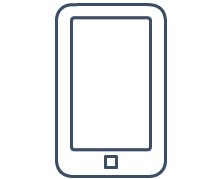Mixed Blessing & Multiethnic Identity—An Essential Read for Everyone

“What are you, exactly?” It’s a question I’ve been asked a lot.
There’s nothing more alienating than being asked something that boxes you into sharing your personal identity and story because of someone’s preconceived assumption of you.
But I had to laugh at Chandra Crane’s response to this question in her new book, Mixed Blessing: Embracing the Fullness of Your Multiethnic Identity:
Depending on my mood, I choose one of a few answers. If I’m feeling sarcastic: “I’m human, thanks. And you?” Or if I’m feeling cryptic: “Exotic, obviously.” If I’m feeling sarcastic and preachy: “Me? I’m part of the Colossians 3:12 ‘Beloved Community,’ part of God’s people that he loves from the center of his being.”
I don’t have the boldness to respond like that, but secretly I wish I did.
For this and so many reasons, I really appreciated Crane’s book. It was specifically written for me and anyone else with a multiethnic identity. As I read, I thought to myself, Wow, this must be how people from the majority culture feel all the time when they see themselves on TV or read about something that was meant for them.
Loaded Questions
So how do I answer loaded questions like the one I mentioned above? It’s complicated. Depending on who’s asking it, I might answer differently. I generally like to reveal myself in layers (you’ll see why below):
Stranger: What’s your ethnic background?
Me: I’m biracial: White and half Asian.
Stranger: I know someone who’s a halfie too! What Asian are you?
Me: I’m half Hmong.
Stranger: What’s Hmong?
Now imagine that you’re me in this situation. Do you really feel like giving a history lesson right now? Did you wake up this morning ready to teach someone your people’s history or wanting someone to be fascinated by your ethnic makeup?
Don’t get me wrong; it’s not that I don’t mind sharing. But imagine having to explain this to everyone you meet. That’s something that my brother and me—and anyone else who has a multiethnic identity—experience all the time.
What I tend to take away from these interactions is that the only thing that seems interesting is my half Hmong side or that I’m mixed. Folks tend to forget that I’m also half White and that not all mixed folks have the same experiences. If my brother and I fully answered the question, we’d say, “Ethnically, I’m Hmong, German, French, Irish, and Native American.” But that’s not what people are really asking for.
Not Enough
Like many of the stories in Mixed Blessing, I struggle with fitting in and feeling like I’m “not enough.” My experience is multifaceted and not easily explained. Racially, I’m White-passing, but I identify closer with Hmong culture. However, I don’t have the same upbringing that my Hmong peers have and can be excluded from the Hmong American experience. I don’t connect much with the stereotypical White majority culture either. On top of that, I’ve had to survive in my cultures by the art of code-switching. It confuses many, but I don’t have the option of conducting myself in just one way. I tend to be an indirect communicator, but I’ve had to learn to be a direct communicator too.
Now that I’m married to an East Asian husband, my mixed experience is evolving even more. My story is one of many mixed stories. People like me often don’t fit into preexisting categories, which makes us feel like we don’t belong anywhere. The pain is real and is something we have to journey with and lament our whole lives.
Mixed Blessing ministers to us mixed folks in a way that our monoethnic friends cannot. Crane highlights other people in Scripture who have mixed backgrounds. Timothy and Moses were two leaders who led out of their mixed identity and calling, and their mixed cultural experience allowed them to honorably influence their contexts. And let’s not forget the mothers who developed their mixed children, Lois and Eunice (Timothy’s mother and grandmother), Tamar, Bathsheba, Rahab, Ruth, and Mary. For me, it was very powerful being able to identify with characters in the Bible who’ve been whitewashed and stripped of their multicultural experience and see how they were nurtured by influential women in Scripture.
My favorite part of the book came when Crane points out that Jesus has a mixed heritage! As we see from his lineage, Jesus wasn’t purely Jewish. He was also part Canaanite, Moabite, and Hittite. Crane goes on to say, “A one-dimensional view of Jesus leaves us with a one-dimensional view of ourselves.” As we mixed folks learn to hold things in tension, we begin to step into Jesus’ story. That simple truth works against the lies of “not enough” and “you don’t belong with us.”
Family & Community
As a person of mixed ethnicity, who will always struggle with being fully understood, having a brother has made me feel less alone in the world. He told me something similar: “Having a mixed sibling helped to keep me sane in a broken world.” He’s another human being with whom I can take a deep breath and say, “My people’s.”
But working through the chapters about family and community was something I had to put off for some time. These chapters led me to acknowledging past hurts my family and church family have experienced—things I’m still working through.
Those chapters dive into the harsh reality that affects all of us. For mixed folks, I recommend taking your time with those chapters and sitting in solidarity with other mixed folks and people of color. For others, read thoughtfully because as you finish the book, you now have a responsibility to steward the insights and stories that Crane shares.
In our faith communities, we see the importance of multiethnicity but often fail to honorably pursue it because we have not yet first embodied it. We haven’t received the right tool for it yet. But when we come alongside mixed folks in our campuses, churches, and faith communities and receive the gift of their pain and imagination, we inherit part of the church body that has been missing and needed. We need more mixed leaders like Timothy and Moses and even more spiritual mothers, fathers, and siblings to help walk us through our development!
Reflecting on the book as a whole, I can’t say it any better than Jemar Tisby does in his foreword: “Is Mixed Blessing an easy read? Certainly not. But it is an essential one.”






